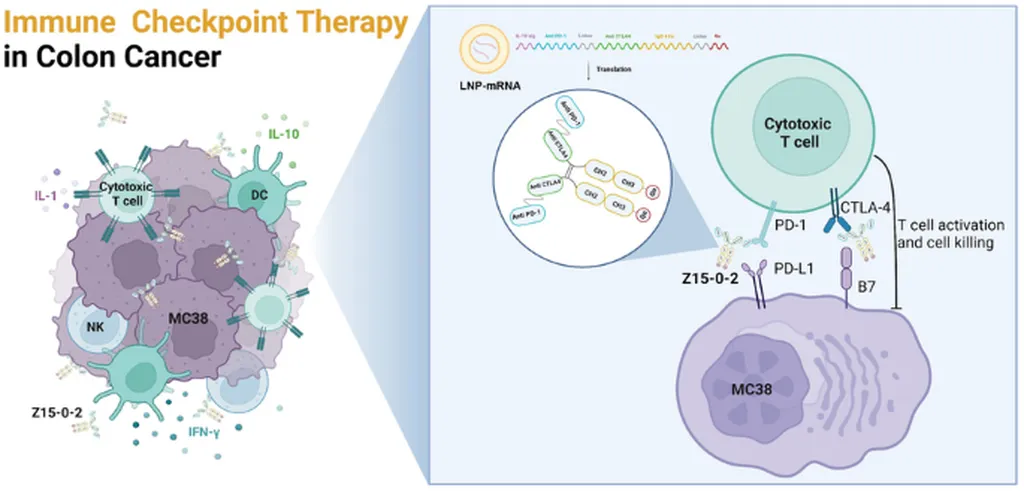In the ever-evolving landscape of cancer immunotherapy, a groundbreaking study has emerged, offering a novel approach that combines the power of nitric oxide (NO)-donor nanoparticles and immune checkpoint inhibitors. Published in the esteemed journal *Science, Technology and Advanced Materials* (translated as *Science and Technology of Advanced Materials*), this research, led by Mei Ting from the School of Chinese Materia Medica at Beijing University of Chinese Medicine, opens new avenues for enhancing cancer treatment outcomes.
The study focuses on PEG-b-P(L-Arg)-based polyion complex micelles, dubbed NanoARGs, which, when combined with a PD-1 antibody, demonstrate a synergistic effect in combating tumors. This combination therapy not only inhibits tumor growth but also enhances the body’s immune response, making it a promising candidate for future cancer treatments.
NanoARGs exhibit a biphasic effect on tumor growth. High doses of these nanoparticles inhibit tumor growth through the generation of nitric oxide from liberated arginine, while low doses paradoxically promote tumor progression. This dual nature underscores the importance of precise dosing in therapeutic applications.
The combination treatment of NanoARGs and PD-1 antibody showed significant anti-tumor activity without notable adverse effects. “The treated mice tolerated the regimen well,” noted lead author Mei Ting, highlighting the potential for translating this approach into clinical settings.
One of the most compelling findings is the elevation of NO levels in both serum and tumor tissues, which is crucial for enhancing immune cell infiltration into tumor tissues. This infiltration is a critical step in the body’s defense mechanism against cancer. Additionally, the treatment facilitated the polarization of tumor-associated macrophages to the M1 phenotype, which is known to have anti-tumor properties. The PD-1 antibody further amplified these effects by blocking the PD-1/PD-L1 interactions and reactivating T cells, key players in the immune response.
The implications of this research are far-reaching. By understanding the mechanisms of action and optimizing the treatment regimen, this approach could revolutionize cancer immunotherapy. “This study provides a foundation for optimizing tumor immunotherapy strategies and advancing clinical applications,” Ting explained, emphasizing the potential for future developments.
As the field of cancer immunotherapy continues to evolve, this research offers a glimpse into the future of personalized and effective cancer treatments. The combination of NanoARGs and PD-1 antibody not only enhances the therapeutic potential but also paves the way for innovative approaches in the fight against cancer.
In the broader context, this research could have significant commercial impacts, particularly in the energy sector. The development of advanced materials and nanoparticles for medical applications is a growing industry, and this study highlights the potential for new products and technologies. As the demand for effective cancer treatments continues to rise, the commercial potential of this research is substantial.
The study, published in *Science, Technology and Advanced Materials*, represents a significant step forward in the field of cancer immunotherapy. By combining the power of NO-donor nanoparticles and immune checkpoint inhibitors, this research offers a novel and effective approach to cancer treatment. As we look to the future, the potential for this therapy to shape the landscape of cancer treatment is immense, offering hope for patients and opportunities for commercial development.

